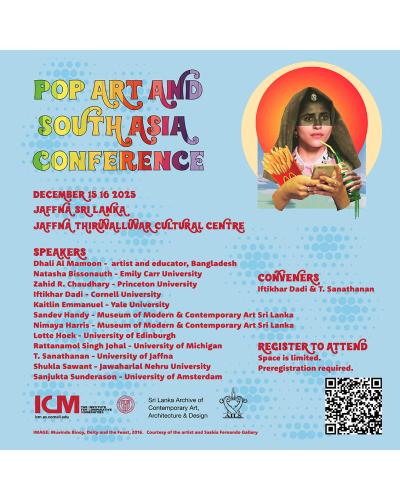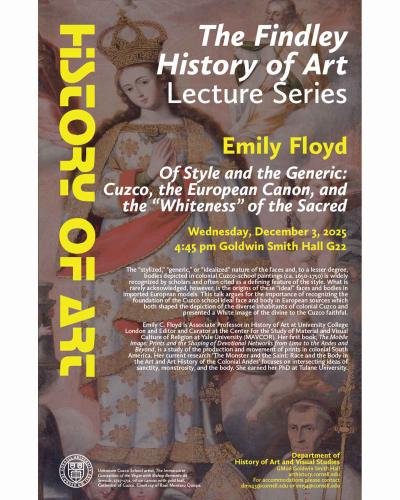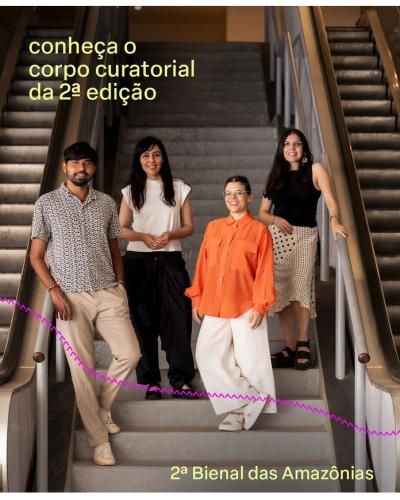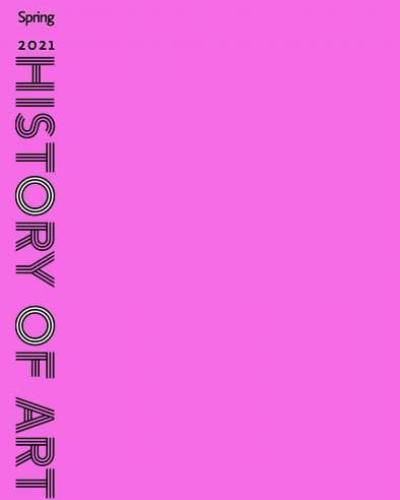SPRING 2021
VISST 2000 Introduction to Visual Studies (AMST 2000/ ARTH 2000/ COML 2000)
J. Rickard
TR 1-2:15 *ONLINE
Sections: DIS 201 & 205 R 2:40-3:30, 203 & 207 F 10:10 -11:00, 202 & 206 R 3:45 – 4:35, 204 & 208 F 11:20-12:10
This course introduces the field of Visual Studies. Visual Studies seeks to define and improve our visual relationship to nature and culture after the modern surge in technology and knowledge. It contains objects, images, and problems that lie beyond the Art History and experimental science, yet is grown from both cultures. It teaches the physical and legal limits of human, animal, and machine vision, how knowledge and power get into images, how spectacle drives the economy, and techniques of analysis that can deliver fresh perspectives across disciplines.
ARTH 2355 Introduction to Medieval Art & Culture (MEDVL 2355)
B. Anderson & C. Robinson
TR 2:45-4:00 *ONLINE
Student Option Grading OPT
Sections: 201 F 1:30 – 2:20 202 F 2:40 – 3:30
Survey lecture course covering the creation, encoding, and reception of Medieval (roughly AD 500-1500) European, Byzantine, and Islamic architecture, ornament, manuscripts, liturgical and luxury objects. The approach is thematic but chronologically grounded; attention is also given to cultural interaction in the Mediterranean basin.
ARTH 2550 Introduction to Latin American Art (LATA 2050, VISST?)
A. Cohen-Aponte
MW 9:40-10:55 M *ONLINE
This course is designed to introduce students to Latin American art from the pre-Columbian period to the present. It will cover the arts of ancient civilizations including the Olmec, Maya, Aztec, Taíno, and Inca, as well as the colonial, modern, and contemporary arts of Latin America and the Latino/a diaspora. Major themes include the relationship between art and religion, innovations and transformations in Latin American art across time, art and identity, and indigenous contributions to the visual arts. This course examines the societal relevance of images across Latin American cultures by paying close attention to the historical and political contexts in which they were created. Course readings are drawn from the disciplines of art history, anthropology, and history, along with theoretical perspectives on colonialism, postcolonialism, identity, race, and ethnicity.
ARTH 3611 Art of South Asia, 1200–present
I. Dadi
TR 11:25-12:40 *ONLINE
This course surveys the art and architecture of South Asia since 1200 CE. We cover major developments over the last eight centuries, including the architecture of the Sultanate Period, Vijaynagar, painting and architecture in the Deccan and South India, Mughal art and architecture, and Rajput painting. We look at British period colonial art and architecture, the rise of nationalism and modernism in Indian art and the circulation of vernacular images, including posters and bazaar prints in the twentieth century. The recent globalization of South Asian contemporary art is also examined. Artistic movements are situated with reference to social, economic, and political developments.
ARTH 3620 After Nature: Art and Environmental Imagination
K. Presutti
MW 2:45-4:00 pm *ONLINE
This course looks at what it means to make art in, of, and after nature, and asks how that art might contribute to shaping the world we live in. Tracing a trajectory from the collection and display of natural history specimens to views of European and American landscapes to contemporary artists who address ecological crises, the course offers both a history of landscape in western art and a study of environmental imagination. We will further explore how nature is represented on Cornell’s campus, including in the Johnson Museum, the Lab of Ornithology and the Botanic Gardens. This course includes opportunities to creatively reflect on our personal relationship to nature through hands-on activities. Students from all disciplines are welcome to engage with themes including natural curiosities, parks and gardens, ideas of wilderness, the picturesque, environmental preservation, earth works, and the “post-natural.”
ARTH 3651 Women in New Media Arts (VISST 3651/ FGSS 3655)
M. Fernandez
MW 11:25 – 12:40 *ONLINE
The work of women has been central to the development of new media art. These rich and varied practices include installation, virtual reality environments, net art, digital video, networked performance, tactical media, video games, remix and robotics. This course will begin with an overview of feminist art and early experiments in performance and video art to then investigate multiple currents of digital and new media art, from early interactive installations to biological art. Discussions will focus primarily on works by women artists from Europe, the Americas and Australia.
ARTH 3741 Greco-Roman Art from Alexander to Augustus (CLASS 3741)
A. Alexandridis
T/R 9:40 – 10:55 *HYBRID
This course explores the visual arts of the Mediterranean region from the court of Alexander the Great to the principate of Augustus, the first Roman emperor. During the first half of the semester we will explore the civic, domestic and religious uses of sculpture, painting, architecture, and other media in major settlements of the Hellenistic world such as Alexandria, Pergamon and Rhodes, focusing on the third to first centuries BCE. In the second half of the semester, we will turn to the rise of the Roman empire and the relationship between native Italian artistic traditions and those of the Hellenized Mediterranean, as Republican Rome drew influences (and booty) from its conquered territories. Throughout the course we will examine visual images alongside relevant literary and archaeological material, emphasizing the role of the visual arts within broader aesthetic, intellectual and political trends.
ARTH 4153/6153 Topics in Feminist Media Arts: Feminist Posthumanisms in the Visual Arts (FGSS/ VISST)
M. Fernandez
W 9:05 – 11:00am *ONLINE
While some feminist works of art in new media address traditional feminist concerns such as the female body, identity, representation, feminist history, and consumerism, others directly engage with recent theoretical currents on the Anthropocene, posthumanism and new materialisms that view humans and non-humans as co-dependent. Non-humans include environmental factors, animals, plants, bacteria, and machines. This seminar will examine work by contemporary artists engaged with posthumanist perspectives in relation to a body of relevant theoretical texts and previous feminist media arts.
ARTH 4160/ 6160 Topics in Colonial Encounters: Art and Identity in Colonial Latin America
(LATA 4160/6160/ VISST 4160)
A. Cohen-Aponte
W 2:40 – 4:35 pm
The colonial period in Latin America (circa 1521-1820s) witnessed the formation of one of the most diverse societies in the world. Labor regimes, religious activities, marriage alliances, and commercial contacts engendered by the Spanish colonial enterprise brought Spaniards, Africans, and Indigenous peoples into dynamic contact. This cross-fertilization of cultures resulted in the construction of new cultural categories and colonial identities whose reverberations continue to be felt into the present day. This seminar explores the role that visual culture played in the articulation of identity in Latin America. For the purposes of this seminar, “identity” can be loosely defined as the overlapping allegiances to which one ascribes, whether racial, cultural, gendered, religious, or community-based. The visual culture of colonial Latin America can reveal multitudes on the construction of self and community across temporal and geographical contexts. We will explore a variety of colonial Latin American objects and images, including paintings, textiles, and material culture. Our discussions of images will be guided by readings on hybridity, coloniality, cross-cultural exchange, and the early modern Atlantic world.
ARTH 4310/ 6310 Methods in Medieval, The Late Medieval Devotional Image
(JWST 4310/6310, MEDVL 4310/6310, NES 6700/4700, RELST 4310/6310, SPAN 4570/6590)
C. Robinson
M 7:30 – 9:25 pm *ONLINE
A commonplace in the scholarly literature surrounding late medieval visual culture in Spain is that it was always "late". The Spaniards lagged behind the Italians -- so the story goes -- in getting a handle on perspective, and trailed after van Eyck and van der Weyden in mastering the niceties of oil painting and realistic effects. Spain's visual production, in other words, is generally treated from a standpoint of connoisseurship and "history of styles," producing predictable results: evaluations of how it does (or does not) conform to the models established for other European contexts whose appropriateness to late medieval Iberia is doubtful to say the least. We will examine, through the contextually based study of the introduction of the retablo (altarpiece) into Iberian churches, chapels and palaces (these contexts, of course, included a significant consciousness, and often presence, of Jews, Muslims, or recent converts to Christianity from those latter two religions) in the early 15th century, both the problems enumerated above and the problematic culture of the religious image in Iberia.
ARTH 4353/ 6153 Sardis: A City at the Crossroads (ARKEO 4353/ 7353, CLASS 4755/7755)
A. Alexandridis/ B. Anderson
W 12:25-2:20 *HYBRID
Situated at the crossroads between the Mediterranean in the West and the Anatolian plateau in the East, Sardis successively belonged to the Lydian, Persian, Seleucid, Roman, and Byzantine empires. An urban center from at least the 7th century BCE onwards, the city developed a very particular fabric of peoples and traditions over the long time of its existence. The seminar follows the history of the site and the changing relationship of city and hinterland from the bronze age to the Byzantine period, focusing on its major civic, religious, military and funerary monuments. Debates in heritage and a critical analysis of the site’s exploration and excavation in modern times, including the first expedition organized by Princeton University and the current Harvard-Cornell led excavations, form an integral part of the class. The seminar includes excursions to the Metropolitan Museum in New York and the Sardis Archive at Harvard University.
ARTH 4621/6621 Art and Empire in Britain and France
K. Presutti
T 9:05 -11 am
This seminar explores the images and objects produced, collected, and displayed in the context of the British and French empires of the eighteenth and nineteenth centuries. Drawing on a range of perspectives—including postcolonial studies, critical race studies, and indigenous studies—we will develop a critical vocabulary for addressing the history of colonialism and the ongoing process of decolonization, asking what particular problems and opportunities art history presents for the study of empire. In what ways were aesthetics entangled with imperial ideology? How did works of art support or challenge dominant political, social, and cultural narratives? And what does a study of historic empires have to offer to our understanding of globalization today? We will also engage with the ways in which the legacy of empire is treated in contemporary museology. Readings on France and Britain will be combined with theoretical texts that have informed scholarship on the history of imperialism more broadly. Participants in the seminar are encouraged to apply the themes covered to a geographical area and time period of their choice in their final paper.
ARTH 4816/ 6816 Modern Chinese Art (also ASIAN 4473/ 6673)
A. Pan
M 2:40 – 4:35 pm *ONLINE
China, a cultural giant of East Asia, made a passive entrance into modernity. With the advent of Western and American colonialism and imperialism, coupled with recent successes in westernization by the Japanese, Chinese artists had to redefine their roles as well as their visions. This turmoil bore witness to a vibrant beginning in modern Chinese art. Interactions between the Chinese themselves, and Chinese interactions with foreigners in the major cities of Shanghai and Beijing, fostered new directions in Chinese art and helped shape western visions of Chinese art history. Issues covered include: Chinese debates on western influence–their theoretical foundations and rationales; New visions for the future of Chinese art in the late 19th and early 20th centuries; Pluralistic approaches and arguments on “Chinese identity” in the modern era; Collecting art and the vision of history; The identity of traditional literati painters in the modern era-their roles, artworks, and deeds; Foreigners in China-the formation of major European collections of Chinese art, and the formation of “Chinese art history” in the West.





